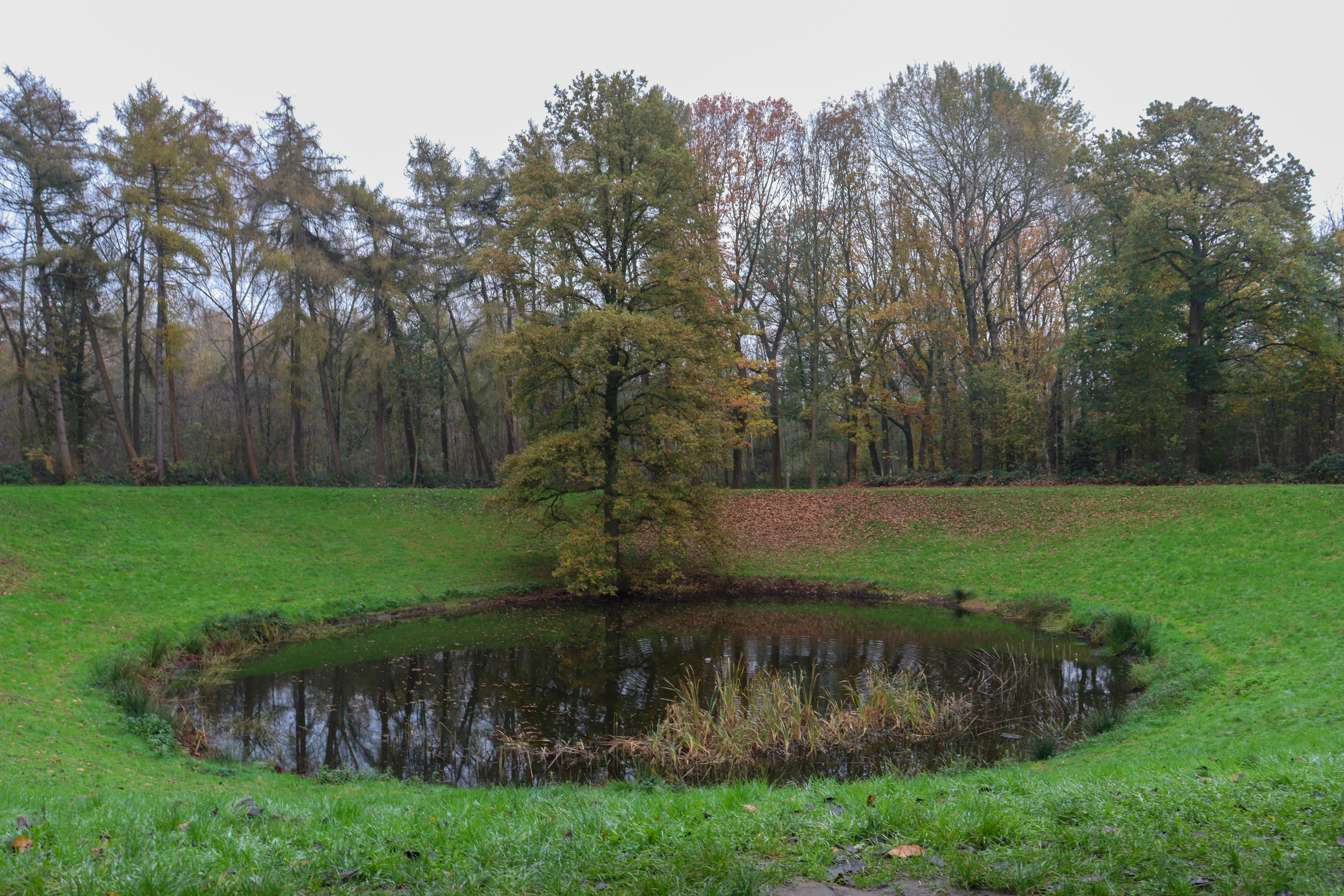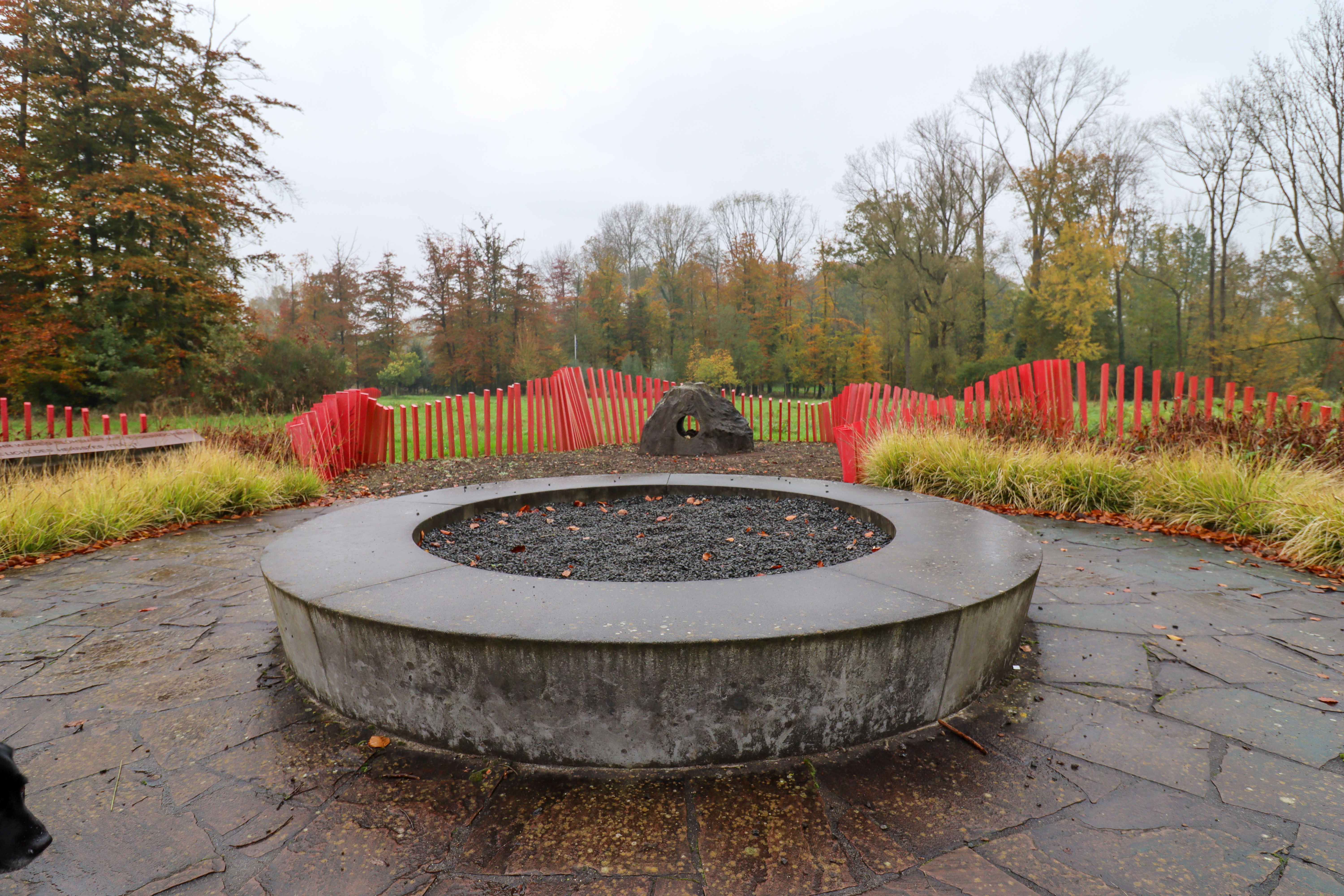Published: Saturday 14 December 2024
The Western Front - part 2
Sunday 10th November is Remembrance Sunday in the UK. We spent that day visiting some of the sites around Ypres. We had a long list of places to visit but we didn't have time to get to all of them. Hopefully, one day, we'll return to the ones we missed.

Hill 60 and the Caterpillar Crater
Way before the war, when the railways were built, the soil that was moved to build the railway tracks was piled up by the side. This created a series of hills in an otherwise flat landscape. During the war, these hills provided strategic vantage points and were fiercely contested. Hill 60 was one such hill.
What is special about Hill 60 is that it has barely been touched since the war. Those who died here are still here. The bodies have not been moved. There are several memorials on the site, which is actually much bigger than I imagined. It is now a very beautiful and peaceful place to go hiking.

One of the ways of capturing the hill was by digging tunnels underneath and then detonating explosives. This created huge craters. One of these was the Caterpillar Crater. Now, it looks like a pond in a little valley, but it was formed when 64,000 kg of explosives were detonated. Many were killed so this is also a mass grave.

It felt strange, walking around this very peaceful, beautiful place, yet knowing what happened here. One of the things that struck me was a tiny memorial stone to someone called Harry. It wasn't like the formal gravestones. It was simple and made me think that Harry was someone's son, someone's sweetheart, someone's brother. I wonder what Harry experienced there at Hill 60.

Euan's Guide review of Hill 60 ![]()
Hooge Crater Museum
There are many WW1 museums. This one is privately owned and seemed very popular. It had many glass cases with life-sized scenes with soldiers, horses, vehicles, nurses, etc. These showed quite accurately what the uniforms and equipment would have looked like. Like some other things we saw though, to me it all felt rather sanitised. Nevertheless, it was interesting and thought-provoking.

One of the displays showed a German soldier being interrogated. It didn't strike me as being very realistic though. It looked more like they were just having a friendly chat. That said, if children are likely to visit, they probably can't make it all look too real.

It did make me think about this kind of situation though. I have read a variety of stories about how captured soldiers were treated. There are examples of compassion, though not many. It seems that many were just killed on the spot, maybe to avoid them harming their captors. There were occasional stories though of defections and men who went on to build lives after the war, going on to marry and live in the UK, France or Belgium.
One of the exhibitions was a video, showing how the frontlines moved during the war. I found this so difficult to watch, as it really only showed that there was virtually no movement in either direction. Small gains and losses occurred in terms of occupation but basically, thousands of men died, seemingly for nothing. I struggle to process this utter waste of life!

Like other sites we visited, there was a focus on the medical side of the war. Hospitals and the general theme of how the injured were cared for, seemed to be something people want to know about. I had assumed it was all dirty and lacking any hope but I'm glad to be wrong here. It would seem that standards were as high as possible and the nurses and medical people were the heroes of the day.
Euan's Guide review of the Hooge Crater Museum ![]()
Passchendaele Memorial Gardens
We intended visiting the Passchendaele Museum but on arrival, we were distracted by signs through the grounds to various memorial gardens. So we ended up taking a peaceful and quite leisurely walk around these instead.
The gardens are laid out so that you can walk around the site and visit each one in turn. Each garden has a board at the entrance, explaining its features, design and any objects inside it.

According to this sign, around 70,000 Britons lost their lives at Passchendaele and are buried or commemorated in the surrounding cemeteries. This garden would look very colourful in summer, with roses and shrubs in bloom. It did look a bit dull in November but I still liked it. The seasonal cycle of life and death seems quite an appropriate way to remember the people lost in the war.

I thought the German remembrance garden had a lot in common with ours. It also had a circular stone raised bed in the middle. I liked the stone at the end though. It has a hole through the middle to represent the holes left in people's lived when they lost loved ones.

I haven't included photos of all the gardens but other countries represented here included:
- France
- Belgium
- Canada
- United States of America
- Australia
- New Zealand
Each little garden is in the shape of a poppy. I'll be honest, it's difficult to see that from the ground but I would imagine in summer, and viewed from above, it would look really clever.
Tyne Cot Cemetery
For me, Tyne Cot Cemetery was one of the most moving places we visited. Firstly, the size of it... It is just so much bigger than all the other cemeteries we saw. The loss of life here really hits you!
There are three different types of memorial here. There are those who are buried and their identity was known. They have white gravestones, inscribed with their name, age, rank and regiment. Then there are those whose bodies were found and buried but they couldn't be identified. They also have a white gravestone but instead of a name, it just says, Known unto God
. The final group are those who were never found and have no grave. Their names are written on plaques around the walls. Actually, that's not entirely true. Those who died after 16 August 1917, are commemorated here. Those that died earlier are on the Menin Gate. More on that in the next post.

We visited here in the late afternoon and the sun was beginning to set. It reminded me of the words that are recited at the Last Post:
They shall grow not old, as we that are left grow old:
Age shall not weary them, nor the years condemn.
At the going down of the sun and in the morning
We will remember them.
Lawrence Binyon, For the Fallen

As well as the cemetery, there is also a visitor centre. This has some interesting artefacts and information but I think the most moving part is that the names of all the soldiers commemorated here are being read out loud on a loop. As you walk around the centre, you hear the names and their ages. Inside the centre, there is also a wall, showing their photos, the date of their death and their regiment. This, again, just made these people more real for me. Each one was a son, a husband, a dad. Each one left to serve their country and never came home. And there were too many!
I end this post with a video of the reading of the names. I haven't edited it, not even to caption it. The names are on the screen.
